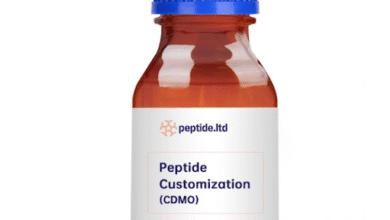Navy Federal Credit Union Home Equity Loan: Veteran‑Friendly, But Is It Your Best Move?

If you’re a veteran, active‑duty, or a military family member, a Navy Federal Credit Union home equity loan can look like a no‑brainer: member‑focused service, competitive pricing, and predictable payments. But the smart question isn’t “Can I get one?”—it’s “Is a fixed home‑equity loan better than a HELOC or a VA‑backed alternative for my situation?” Here’s the no‑fluff guide to decide.
For quick side‑by‑side numbers on fixed second mortgages, HELOCs, or a refinance, platforms like Tiger Loans offer a range of solutions tailored to different financial needs and can help you price payment, APR, and total cost before you commit.
What you’re actually choosing
- Home equity loan (fixed second mortgage): Lump sum at a fixed rate with fixed monthly payments over a set term (often 5–20 years). Great for one‑time, defined costs—a roof, tuition, or debt payoff.
- HELOC (home equity line of credit): A revolving line—draw, repay, redraw—usually with a variable rate. Best for phased or uncertain expenses, like multi‑stage renovations.
Credit‑union underwriting is still rigorous, but member institutions often pair competitive rates with leaner fees and a more human review. Expect limits based on combined loan‑to‑value (CLTV), credit score, income stability, and property type.
Pros veterans typically care about
Why a fixed home equity loan works well
- Budget certainty. The payment doesn’t move—helpful when you’re managing BAH shifts, deployments, or second careers.
- Shorter payoff path. A 5–10 year term clears the debt quickly and limits lifetime interest.
- Keeps a great first‑mortgage rate intact. If you locked a low rate years ago, don’t touch it.
Why a HELOC might be smarter
- Flexibility. Borrow only what you need; interest accrues on the drawn amount.
- Project drift protection. If a remodel costs more than planned (it will), you’re not stuck scrambling for another loan.
- Some plans let you lock tranches. Fix part of the balance while keeping the rest flexible.
Key eligibility levers
- Membership. You’ll need to meet service‑related or family eligibility requirements to join the credit union.
- CLTV cushion. The lower the CLTV, the better the odds and pricing; many lenders keep caps near the low‑80% range.
- DTI and credit. Clean, sub‑40% DTI with an established score gets the best terms. Recent late pays or thin reserves slow things down.
- Property and occupancy. Owner‑occupied single‑family homes are simplest. Condos, multi‑unit, investment, or manufactured homes can face tighter limits.
Where VA options fit
A lot of veterans overlook that VA pathways can compete hard with second‑lien pricing—especially if you’re considering a big project or consolidating expensive debt. If you’re eligible, you may qualify for VA Loans that offer favorable terms compared with many conventional products. Depending on rates and fees, a VA cash‑out could beat a high‑rate second lien, while a streamlined option can lower payment without heavy documentation. Always run the numbers both ways.
Cost, timing, and paperwork
- Costs: Appraisal/valuation, title, recording, and possibly origination. HELOCs may add annual or early‑closure fees if you shut the line during draw. Compare APR, not just the headline rate.
- Timing: Plan for 2–6 weeks. Delays usually come from appraisal scheduling, title hiccups, or piecemeal documents.
- Docs: Government ID, LES or pay stubs/W‑2s, tax returns if needed, bank statements, mortgage statements, insurance, HOA docs, and payoff letters for any debts you’ll clear.
Risks to price in (tell‑it‑like‑it‑is section)
- Your home is collateral. Missed payments can trigger foreclosure. Budget for your worst month, not your best.
- HELOC payment shock. Interest‑only draw periods feel light—until repayment starts. Get the post‑draw payment in writing.
- Term creep. Stretching to 15–20 years makes payments comfy but inflates lifetime interest. Pick the shortest term you can comfortably afford and automate extra principal.
Simple decision framework
- Locked an excellent first‑mortgage rate?
Keep it. Use a fixed home equity loan for known, one‑time costs. - Costs are uncertain or phased?
Choose a HELOC, ideally with the option to lock chunks at a fixed rate. - Large cash need or debt consolidation?
Compare a VA cash‑out against both second‑lien options—total cost can surprise you (in a good way). - Tight budget?
Stress‑test at lower income and higher expenses. If it breaks, borrow less or pick a shorter term with a smaller amount.
Bottom line
A Navy Federal Credit Union home equity loan can be an excellent, veteran‑friendly way to get fixed, predictable financing—especially if you already hold a great first‑mortgage rate. If your costs are uncertain, a HELOC with lock features buys flexibility. And before you sign anything, pit both against a VA path and a conventional comparison. Choose the option that still works when rates rise, orders change, and real life gets loud.


